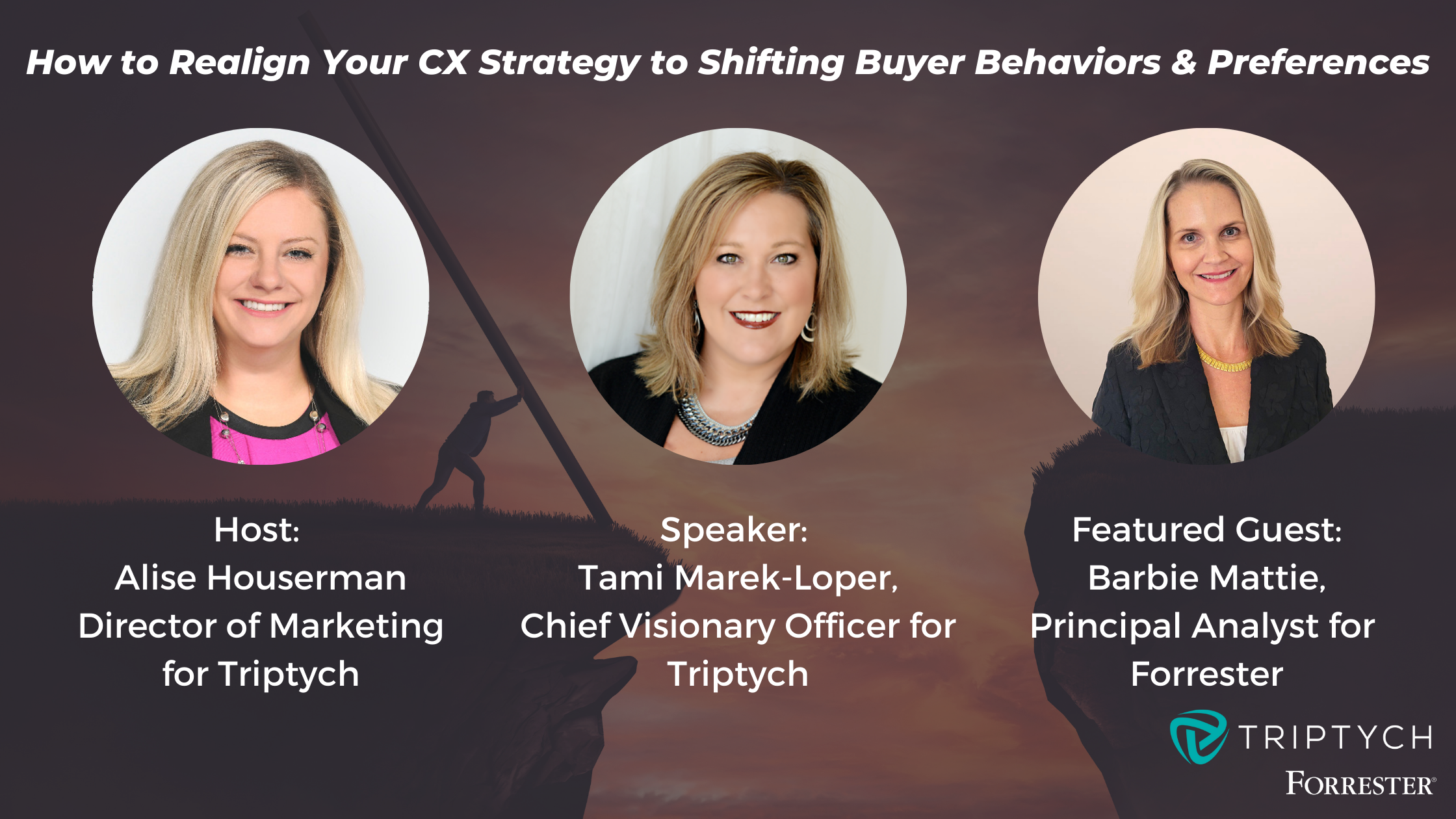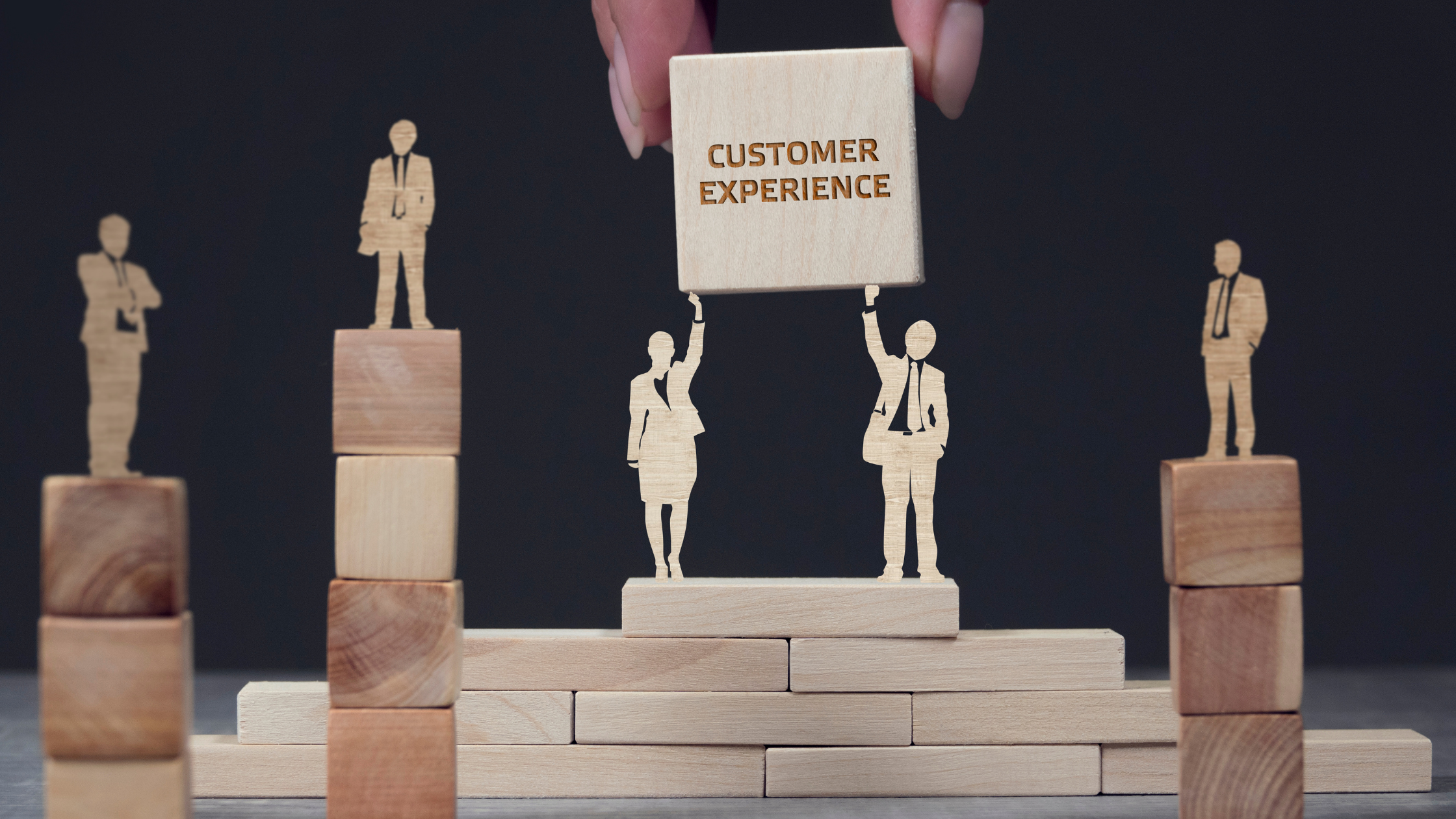How Omnichannel Marketing Can Improve Your Customer Experience (CX)
Omnichannel and Customer Experience (CX) might win the award for the marketing industry topics with the most buzz in 2021. Maybe you think it’s a bit...
We’ve seen too many inefficiencies fly under the radar and hold companies back. Our expertise in through-channel marketing and field sales support enables small marketing teams to support distributed sales forces at scale.

5 min read
 Alise Houserman
:
October 9, 2021 at 1:45 PM
Alise Houserman
:
October 9, 2021 at 1:45 PM

Following the presentation of How to Realign Your CX Strategy to Shifting Buyer Behaviors & Preferences, our speakers took some time to answer questions submitted by the audience in a brief Q&A Session. To listen to the discussion and view the data presented during the webinar prior to the Q&A session visit the link below to access the on-demand webinar recording and/or download a copy of the presentation.

Alise: I'll start with Tami, and of course you both can give your thoughts. How does the data regarding content preference reflect what you're seeing in the market? Do you have advice on where we should be focusing our marketing efforts?
Tami: I think it really changes based on the industry. It changes based on even the age of the buyer and the salesperson. The most important is to put some kind of tracking mechanism in place, so that you can really look at how that content is being consumed [by the prospect or customer] and how it's being used [by the sales agent, rep, etc.]. I don't mean just number of orders or number of downloads. If you offer customization of this content, you should be able to track how the salesperson is customizing it—what call to action they've chosen, where they're using it, etc. All those touchpoints within a single piece of content will really help you determine what content should be used when [in the buying journey] and what's working for your audience and for your sales team. Because I can tell you that someone who is new to sales, doesn’t know what to use—they need more handholding in those first few presentations. Versus someone who's been in sales for 40 years—they can sort of have the conversation off the cuff. It's important to be tracking and measuring that [which content is working] and then serving up that content in a manner that’s relevant to both the buyer and the salesperson.
Barbie: The only thing that I would add to that is the content asset preference. It really needs to be considered in the context of mapping out all the interactions. Personally, what we're seeing in the market, is not really a shift in the content asset preference, we're seeing more of a shift, on the Forrester side of the house, in the personal interactions. Many, many fewer results for live, in-person trade shows, live provider conferences. A lot of the physical events went away, which didn't really impact much of the asset preferences at all. One of the things that I did notice in some of the data, that wasn't shown today, is, as far as interaction preferences, the good old-fashioned phone call is coming back around. People are having Zoom fatigue, and they are picking up the phone and calling, and that's become a lot more effective mode of communication, and then the content asset that's followed up is usually some sort of attachment in an email that was relevant to the conversation.
Alise: Absolutely. That makes sense. A good old phone call.
Barbie: A good old phone call. Exactly.
Alise: Speaking of Zoom fatigue and things that seem to be lingering, Barbie, we'll have you take this one. With the implications of COVID continuing to linger, do you have any recommendations for remaining agile and optimizing through the end of 2021 and into the new year?
Barbie: Well, I mean, we're already almost to the beginning of Q4, so depending on your sales cycle, there's not a lot that can be done now to influence your Q4 pipeline—realistically. But if we're talking about just tweaks and changes, if the data that we shared with you today resonates, then I would absolutely take an approach to piloting some of our data—maybe a case study was a relevant piece of content. What you can do is a content audit that says, I have a case study that is specific to this industry. I want to leverage it some more. Here are the calls to action to get somebody to read this case study if they're in the education stage, here’s a call to action to get somebody to read this in the solution in the selection phase and tailor the calls to action. That's one minor tweak that you can make, which is adjusting the calls to action to be relevant to the stage of the buyer's journey they're in to get somebody to that content asset.
Alise: I'm also taking notes from a marketing perspective myself, so I appreciate that. Tami, somebody asked a question that I think you would be able to answer best. With this increase in interactions from prospects, how do you think this impacts sales involvement? What are the risks you are seeing for sales?
Tami: I think that really, the main risk is that sales go in and they're not armed to have the conversation where the prospect's education process left off. You don't want to go in and have a conversation about the company's history if the prospect is already 15 touchpoints in and knows everything, more about your company than you do. So, it's really making sure that marketing is saying, use this here, use this there, and really making sure that the right content is being used. I also think another risk is that, and it goes with the whole COVID thing, people are ... Some are in the office, some are not, so being cognizant of how you're doing delivering that content and those conversations is key. Knowing if someone's working at home, you don't want to send them something to the office because they'll never get it. Those types of things. Just being aware of who that prospect and those buyers are, so that you're matching them, not only in their journey, but just physically where they are in the world. I think that's a huge risk and that'll take effort for sales and marketing quite frankly.
Barbie: I love that point, Tami, especially when you couple that with your ability to download to a mobile app. Being mobile is key, especially with the surge in the millennial workforce that we're seeing. Everybody is on their phone 24/7.
Alise: We have about two minutes left. So, I'm going to ask this last question that came in for each of you, and then the people who ask questions that we didn't get to, we'll be sure to follow up after. The last question is, aside from the action items, what do you believe is the most important data point or insight to take away from this presentation?
Barbie: The most important is you use the data to inform your decisions.
Alise: Absolutely.
Barbie: Well, so the most important question as a company that you need have an answer to that will inform all the work that you do is, how do you plan to grow as a company? Are you planning to grow by reaching new buyers? Are you planning to grow by expanding into new markets? Are you planning to grow by being more productive and efficient and worried about the bottom line? Are you planning to grow by launching new products? There's five ways you can grow. Knowing the answer to that question is the most important data point that you can have that has the longest ripple effect downstream.
Tami: I would say that, for me, it's really those touchpoints and how many there really are, and preparing yourself, as you go to 2022, to really ramp up your content strategy, whether that's self-guided or personal interaction, and making sure that you've got enough there to keep your buyer engaged from the time they start engaging with you until they finally buy your product.
To view the webinar in its entirety, click the button below to access the on-demand recording and a copy of the presentation slides
If you’ve already viewed the webinar and have any questions you would like to ask about the contents please visit triptych.com/talk-to-expert

Omnichannel and Customer Experience (CX) might win the award for the marketing industry topics with the most buzz in 2021. Maybe you think it’s a bit...
![6 Tips for Creating Brand Differentiation [Infographic]](https://www.triptych.com/hubfs/Canva%20images/Canva%20Design%20DAEgKUagOKI.png)
In highly competitive markets, it doesn’t pay to blend in. Successful brands create their own spotlight by bringing attention to the characteristics...